Posts Tagged ‘wayzata ice dam removal’
Tuesday, February 7th, 2017
How to Prevent Ice Dams on Your Home – Answers from the Experts
Overview
To be frank, the entire concept of ice dam prevention is a little bit disingenuous. There are certain circumstances where even the most well constructed, well insulated and ventilated roof system will get ice dams. Those situations are rare, but they do occur. When we talk about ‘prevention’, what we are realistically discussing is the field of work aimed at either reducing the likelihood of ice dams or minimizing the impact of ice dams if they do occur.
Two Approaches to Ice Dam Prevention:
We break ice dam prevention into two broad categories; Architectural and Non-Architectural. Architectural solutions involve modifications to the existing structure to alter the problematic thermal characteristics that are contributing causes of ice dams. In contrast, Non-Architectural solutions are comprised of the work done to minimize the impact of unwanted roof and gutter ice accumulations when they are likely to begin.
Architectural Approach
It’s seldom the case that a single home medication, once implemented, will permanently fix an ice dam problem. More often than not ice dam prevention involves a combination of changes in order to have a significant impact.
A very standard ice dam prevention project for The Ice Dam Company might involve enhancing or replacing the insulation in the attic or roof system, adding ventilation and sealing all of the air-leaks between the heated spaces and the attic and roof framing. Usually, this combination of endeavors yields good results. Sometimes it is necessary to alter the roofing system itself. Normally, this means installing a single ply roof system such as hand-soldered copper pans or a rubber membrane. Single ply roof systems are quite resilient in the face of ice dams but they will to work in all areas due to aesthetics. We will dig further into each of the three basic architectural solutions in other Case Studies.
Certain ice dam creation factors cannot be addressed through Architectural solutions such as insulation, ventilation, air-sealing or roof system enhancements. Case Study #19 discusses the relationship between the sun and ice dams. We recently installed heat tape on a 6 year old, $3.8 million dollar home. The homeowner had spared no expense relative to energy efficiency in the original design and construction. That was not the issue. The problem was simply that the sun was melting the snow on an exposed roof plane higher on the home which resulted in melt water running down to a cold eave area that was hidden from the sun. There it would re-freeze in cycles to create an ice dam that kept coming back year after year.
Non-Architectural Approach
In terms of ice dam prevention, there is a small set of options available that fall outside of the Architectural solutions. These involve systems to manage snow and ice accumulations as they develop on a roof. The most popular Non-Architectural ice dam solution is heat cables. Otherwise known as heat tape and roof deicing, heat cables are wires that warm up in response to electrical current. Typically, heat cables are installed in a serpentine or zig-zag pattern on a roof along the eaves. To be clear, heat cables do not resolve the underlying issues related to why ice dams are happening rather they help manage the issue of unwanted ice accumulations when the conditions are ripe for their formation. A common complaint about heat tape is that it does not address the real issues causing the ice dams. This complaint is justified because it is true. That said, heat cable systems can be installed on a home for a fraction of the cost of traditional Architectural solutions. Many homeowners are not in the position to spend $5,000 to $25,000 for Architectural ice dam solutions making the idea of a $1,000 heat cable system very appealing. We do both approaches every day.
We would be remiss in not mentioning the very most basic thing you can do to minimize the likelihood of ice dams; Roof shoveling. Diligently removing the snow from your roof can greatly reduce the likelihood of ice dams. Unfortunately, some roofs are too high or have areas inaccessible to the average homeowner, making roof snow removal an ineffective approach to guaranteed ice dam prevention. Removing all of the snow from the roof planes affected by the ice dams is very important. See the Ice Dam Company Case Study #3 that discusses a phenomenon called the ‘Double Dam’.
To read more Case Studies click here.
Tags: about ice dams, best ice dam removal in minneapolis, best rated ice dam removal contractor, commercial ice removal, edina ice dam removal, heat tape and ice dams, heat tape ice dam prevention, highest rated ice dam removal company in minneapolis, ice removal company, minneapolis ice dam removal, orono ice dam removal, preventing ice dams, twin cities ice dam remover, wayzata ice dam removal
Posted in Ice Dam Heat Tape, Ice Dam Prevention, Ice Dam Removal, Ice Dams, Misc., Ice Dams: General Info | Comments Off on Ice Dam Prevention: Two Approaches
Friday, February 3rd, 2017
The Relationship Between Ice Dams and Icicles
Do Icicles Mean Ice Dams?
You may notice that the home shown below has some icicles (sarcasm intended). Obviously, when something like this occurs, it is quite likely that you have ice dams as well as a giant insurance claim from the subsequent water damage it has caused. The fact is, the vast majority of the ice dam steaming projects we complete are not on homes with monster icicles. When we arrive we often see quite modest icicles from the ground. The relationship between icicles and ice dams is not difficult to understand when you study the problem for awhile. This Case Study digs into the topic of icicles and ice dam life cycles.
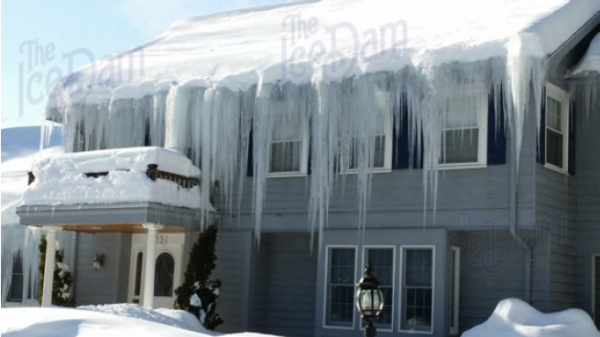
Do icicles mean ice dams? The short answer is NO. While icicles on the edge of the roof are often a precursor to ice dams, they are not always present when ice dams begin to cause leaks through a roof system. Ice dams and icicles are part of the same accumulation but they are not the same thing by any means. This brings us to the normal life cycle of an ice dam.
The characteristics of ice dams change over time. The typical lifespan of an ice dam rangers from a few days to a few weeks. During that time it may get thicker or thinner, icicles may appear and disappear on its’ leading edge, and it may be almost completely hidden under snow or partially or completely exposed. For this reason, there is a big different between a young ice dam and an old ice dam in terms of the presence of icicles. Very young ice dams often have visible icicles on their leading edge. Over the following days most ice dams tend to grow more in depth than thickness, meaning the ice migrates higher up on the roof plane (refer to Case Study #06 for more information). Icicles on more mature ice dams tend to melt away from the affects of direct sunlight or warmer outdoor temperatures. However, while the telltale icicles may be missing, the mass of the ice dam is left behind, frequently hidden under a blanket of snow.

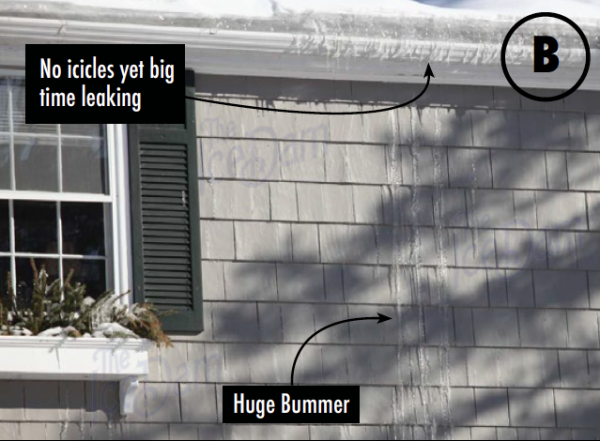
The photos above (A) and (B) demonstrate this phenomenon on two St. Louis Park homes. Virtually no traditional signs of an ice dam and yet you see water leaking down the exterior wall, through the siding and in the wall cavity itself. Bad news.
Case Study #16 examines the important topic of ice migration, from icicles to the interior of your home.
To read more Case Studies click here.
Tags: about ice dams, best ice dam removal in minneapolis, best rated ice dam removal contractor, edina ice dam removal, highest rated ice dam removal company in minneapolis, how do I know I have ice dams, how to file an insurance claim for an ice dam, ice and snow removal, ice dam expert, ice dam heat cable, Ice dam heat tape, ice dam prevention, Ice dam removal, ice dam removal jerks, minneapolis ice dam removal, twin cities ice dam remover, wayzata ice dam removal
Posted in Ice Dam Heat Tape, Ice Dam Prevention, Ice Dam Removal, Ice Dams, Misc., Ice Dams: General Info, Water Damage | Comments Off on Icicles and Ice Dams
Tuesday, December 20th, 2016
The Relationship Between Sunshine and Ice Dam Formation
Ice dams happen when there is a section of roof that is above freezing (32°) where roof snow melts which then drains to an area that is below freezing, usually the eaves, where it refreezes. The source of this temperature differential is usually the result of interior heat loss, specifically via air leaks and insulation issues. In fact, according to our experience, 95% of our client’s ice dam problems can be mitigated or eliminated altogether through the modification of the thermal characteristics of the home. Still, we see ice dams on certain homes for reasons outside the scope of it’s architectural deficiencies. Homes with what we might call nearly perfect air-sealing, insulation and ventilation still get ice dams. This Case Study describes such a situation.
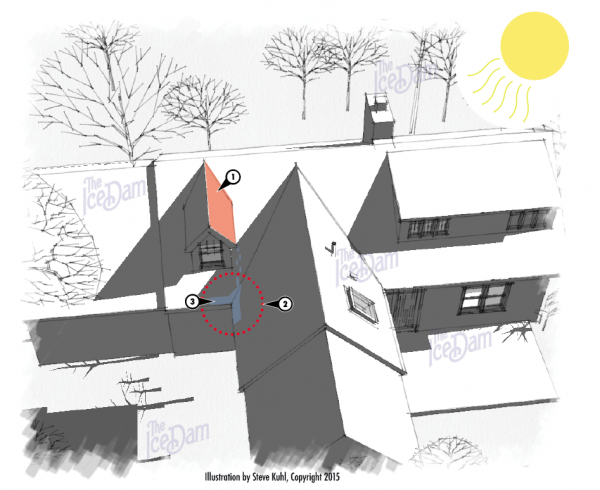
The winter sun hits Minnesota homes (and all homes in this latitude) at a low angle during the winter. The result is that certain roof slopes never see direct sunlight while others get hit quite directly. The above illustration demonstrates an ice dam situation that relates to the heating effects of the sun. Solar radiation warms the roof slope on the dormer (1), the resulting melt water drains to an area of the home (2) that never sees direct sunshine where it refreezes to form an ice dam (3). These are particularly challenging ice dams to prevent. Often times heat tape, also known as heat cables, are the only affordable option.
To read more Case Studies click here.
Tags: about ice dams, best ice dam removal in minneapolis, best rated ice dam removal contractor, edina ice dam removal, edina ice dam steaming, highest rated ice dam removal company in minneapolis, how do I know I have ice dams, ice and snow removal, ice dam expert, ice dam heat cable, Ice dam heat tape, ice dam prevention, ice dam removal jerks, minneapolis ice dam removal, sunshine and ice dams, thermal characteristics and ice dam prevention, thermal imaging and ice dam identification, thermal inspection, twin cities ice dam remover, wayzata ice dam removal
Posted in Ice Dam Prevention, Ice Dams, Misc., Ice Dams: General Info | Comments Off on Sun and Ice Dams: Cause and Effect
Thursday, December 15th, 2016
A Simple Explanation of Where the Water Goes When Ice Dams Cause Leaks
Where the Water Travels:
Water hitting the Top Plate of the wall (A) spreads out across the top plate, travels downward with gravity, working behind the Siding (B) the Housewrap (C), the Insulation (D), the Vapor Barrier (E) and the Drywall (F). Water always seeks the path of least resistance and therefore frequently shows up through existing penetrations in the ceiling such as lights. Water leaks caused by ice dams can travel many feet from the source before manifesting inside the home. On homes built with vapor barriers on top of the ceiling finish, water will sit on top of the drywall and soak the insulation before leaking inside.
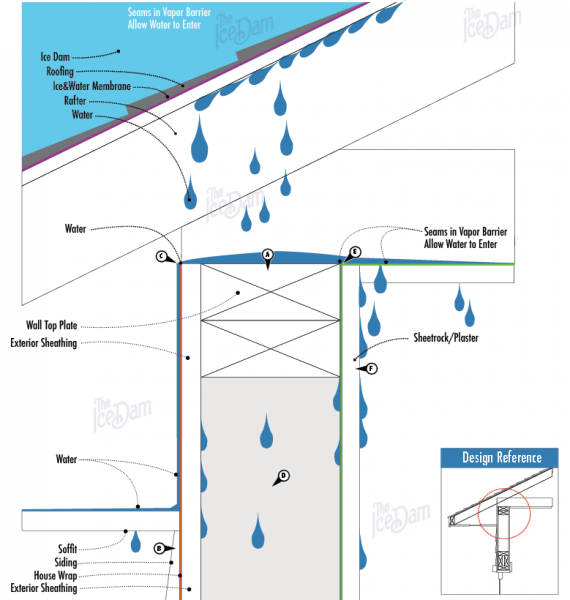
To read more Case Studies click here.
Tags: about ice dams, best ice dam removal in minneapolis, best rated ice dam removal contractor, edina ice dam removal, edina ice dam steaming, heat tape, heat tape ice dam, heat tape ice dam prevention, highest rated ice dam removal company in minneapolis, how do I know I have ice dams, how to tell if an ice dam is a problem, ice and snow removal, ice dam heat cable, orono ice dam removal, twin cities ice dam remover, wayzata ice dam removal
Posted in Ice Dams, Misc., Ice Dams: General Info | Comments Off on Close Up of an Ice Dam Leak
Thursday, December 8th, 2016
How Roof Pitch (Roof Slope) Affects the Impact of Ice Dams on Standard Residential Construction
Fact: The Flatter the Roof, the Less Ice it Takes to Cause Problems
As discussed in previous Ice Dam Company blogs and Case Studies, there is a strong relationship between roof slope and the timing and likelihood of damage as the result of ice dams. Specifically, low roof slope areas are far more susceptible to damage by small ice accumulations than areas of steeper slope. Why? It comes down to basic geometry. Study the diagrams, below. You can see that the high slope roofs (C) require a pretty thick ice dam to form before water will begin leaking into the home. Eave depth plays another important role. See Case Study #10 for more information.
Ice dams create leaks when melted water from higher on the roof slope hits a dam of ice and is forced to travel backwards, up and under the plus of the roofing system (typically asphalt shingles). When that backward motion occurs outside the plane of exterior wall (dotted red lines in diagrams), the water runs down the exterior wall or through the soffits (zone indicated by happy face). As soon as the water falls on top of the top plate of the wall it seeps down through the wall causing damage to insulation, finishes and flooring (zone indicated by sad face). Truthfully, water coming through your soffits is nothing to be happy about. The next step is the interior of your home so it is considered an emergency in terms of the progression of the ice dam. As mentioned before, if you see ice coming through the soffit or down the exterior wall, it’s time to get that ice dam removed.

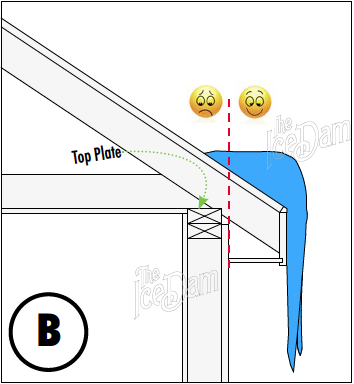
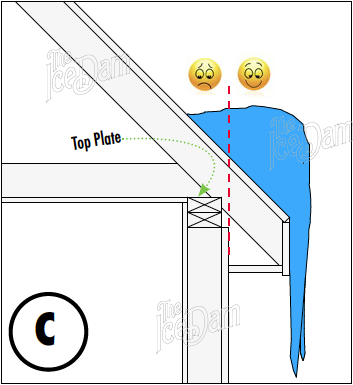
Wayzata Residence with Low Pitch Roof Suffers the Consequence
Seen below is a home in Wayzata, Minnesota where we steamed an ice dam a couple of years ago. The construction assembly was typical 2×6 walls, 12″ eaves, 6″ facia with a 2/12 roof pitch. From the ground, no ominous, threatening icicles could be seen, just a couple of pathetic whiskers of ice off the face of the gutter through the soffit (D). Pan out and you see that the entire exterior wall was bleeding ice through the siding. This is bad. This home had massive damage to the interior insulation, drywall and flooring systems.

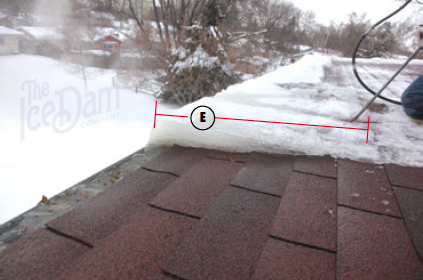
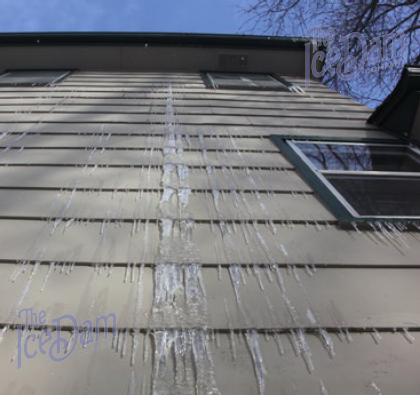
As discussed in Case Study #06, low pitch roofs also tend to create ‘deeper’ ice dams (E), where the ice has grown further up the roof. Deep ice dams take far longer to remove.
Three take-aways:
- No icicles does not mean no ice dams.
- Low pitch roofs present higher risks in terms of how quickly small ice dams can cause big problems.
- Ice or water coming down the exterior wall in below freezing conditions is bad. Very, very bad.
To read more Case Studies click here.
Tags: about ice dams, best ice dam removal in minneapolis, best rated ice dam removal contractor, commercial ice removal, edina ice dam removal, edina ice dam steaming, highest rated ice dam removal company in minneapolis, how do I know I have ice dams, ice and snow removal, ice dam expert, ice dam heat cable, ice dam prevention, ice dam removal jerks, twin cities ice dam remover, wayzata ice dam removal
Posted in Ice Dam Prevention, Ice Dam Removal, Ice Dams, Misc., Ice Dams: General Info, Water Damage | Comments Off on Roof Pitch and Ice Dams: Part 1
Monday, December 5th, 2016
1. Water Damage
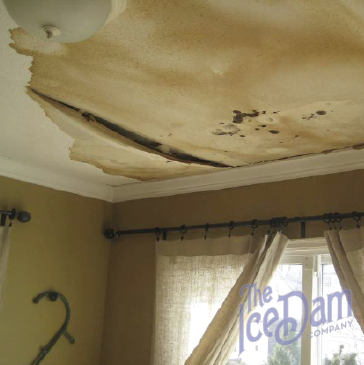
2. Ruined Insulation
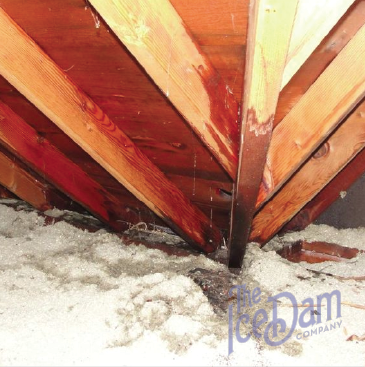
3. Mold and Mildew
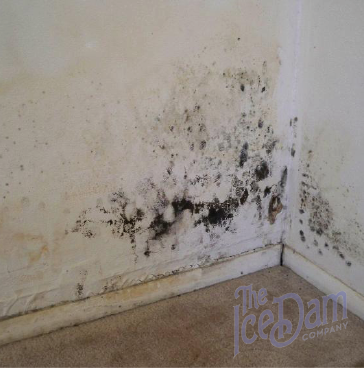
4. Gutter Damage
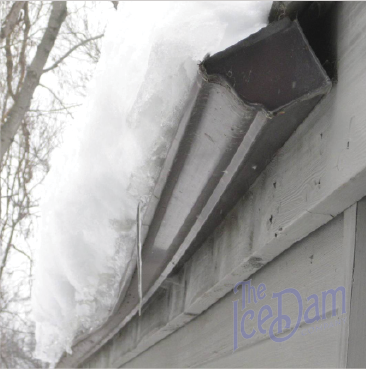
5. Property Damage
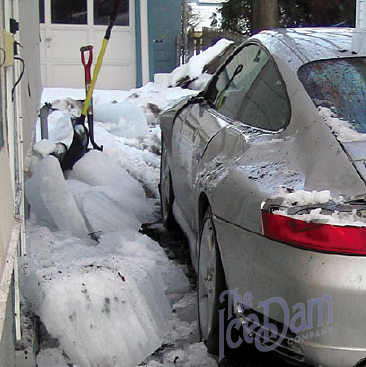
6. Soffit Damage
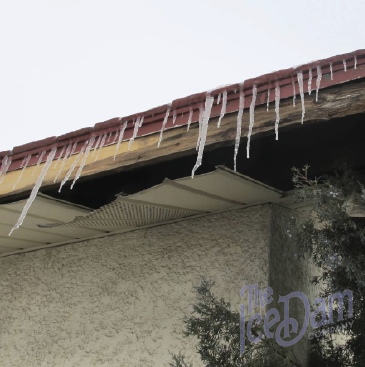
7. Landscaping Damage

8. Falling Ice
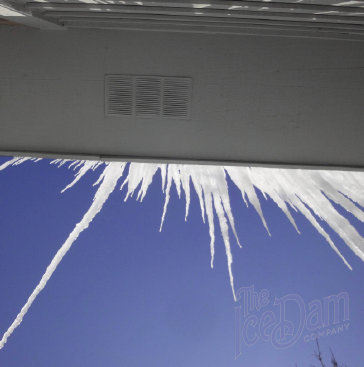
9. Flooring Damage
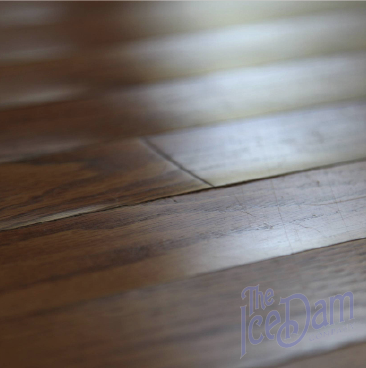
To read more Case Studies click here.
Tags: about ice dams, best ice dam removal in minneapolis, best rated ice dam removal contractor, commercial ice removal, edina ice dam removal, edina ice dam steaming, gutter deicing wire, highest rated ice dam removal company in minneapolis, how do I know I have ice dams, how to file an insurance claim for an ice dam, ice and snow removal, ice dam expert, ice dam removal jerks, minneapolis ice dam removal, orono ice dam removal, roof ice steaming, twin cities ice dam remover, wayzata ice dam removal
Posted in Ice Dam Prevention, Ice Dam Removal, Ice Dams, Misc., Ice Dams: General Info, Water Damage | Comments Off on 9 Common Types of Ice Dam Damage
Tuesday, November 1st, 2016
Steaming Ice Dams is the Fastest, Safest Way to Remove Ice Dams in Minneapolis
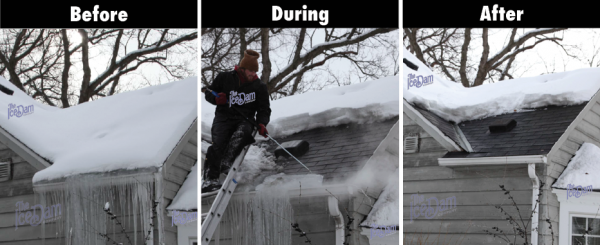
Why Use Steam?
When used properly, a commercial ice dam steamer is the best way to quickly and safely remove an ice dam or other unwanted ice accumulation. Like anything else, it’s possible to use a steamer improperly and damage property. That’s why you should hire an experienced ice removal company. Far more common is damage done to roofs using high temperature pressure washers. Most of our competitors that claim to be using steam are actually using high temp pressure washers. It’s the dirty little secret in our industry. Want to know the easiest way to tell the difference between a steamer and a high temperature pressure washer? If the gun has a trigger, it is NOT a steamer. It’s that simple. More information about Ice Dam Steamers vs High Temp Pressure Washers can be found here.
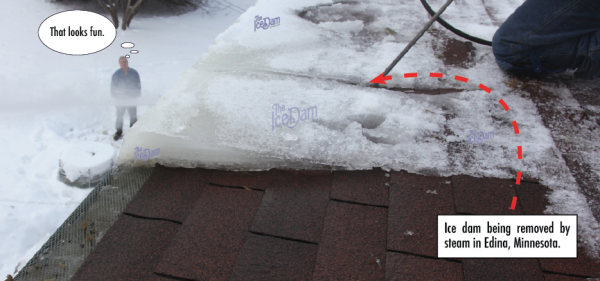
Ice Dam Company is a certified member of IDSAFE : the Ice Dam Steaming Association For Education.

Ice Dam Steaming Association For Education
To read more Case Studies click here.
Tags: about ice dams, best ice dam removal in minneapolis, best rated ice dam removal contractor, edina ice dam removal, edina ice dam steaming, highest rated ice dam removal company in minneapolis, ice dam removal jerks, ice removal company, ice removal professionals, lake minnetonka ice dam removal, minnepolis ice dam removal, orono ice dam removal, roof ice steaming, signs of an ice dam problem, twin cities ice dam remover, wayzata ice dam removal
Posted in Ice Dam Prevention, Ice Dam Removal, Ice Dams, Misc., Ice Dams: General Info | Comments Off on Ice Dam Removal by Steam
Monday, December 22nd, 2014
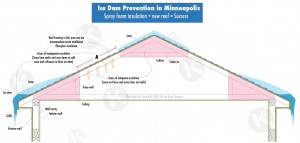
Attic insulation contractor addresses ice dams with new insulation in Edina
Using the words ‘ice dam prevention’ in Minneapolis is a dangerous gamble. It’s true that with certain efforts one can greatly reduce the chances of getting ice dams, it is almost impossible to prevent them altogether. For example, we can do a top quality insulation and ventilation retrofit on a Minneapolis attic only to be thwarted by the fact that the homeowner likes to keep the attic at 90 degrees in the winter. That is a formula for ice dam disaster in Minnesota. There are a number of methods to employ in preventing ice dams (or reducing their severity, in some cases). Here are links to two such approaches used by our sister company, Kuhl’s Contracting, a nationally recognized ice dam prevention company.
Approach to ice dam prevention in Minneapolis #1
Approach to ice dam prevention in Minneapolis #2
Homeowners looking to fix or at least minimize the risk of ice dams in Minnesota are wise to look at the key contributing factors that spawn ice dams. Those are, the weather, insulation, ventilation, air leaks, personal lifestyle and home architecture. We are frequently successful in reducing and/or eliminating ice dams through the use of high performance spray foam insulation systems in combination with enhanced attic ventilation.
Here is another helpful link on the topic of home insulation and ice dam prevention in Minneapolis
Tags: about ice dams, best ice dam removal in minneapolis, best rated ice dam removal contractor, commercial ice removal, construction site ice removal, edina ice dam removal, how to file an insurance claim for an ice dam, ice and snow removal, ice dam expert, ice dam removal jerks, Ice dam Steaming, ice removal company, ice removal from concrete, ice removal professionals, minneapolis ice dam removal, orono ice dam removal, roof ice steaming, signs of an ice dam problem, wayzata ice dam removal
Posted in Ice Dam Prevention, Ice Dams, Misc. | Comments Off on Minneapolis Ice Dam Prevention
Thursday, December 18th, 2014
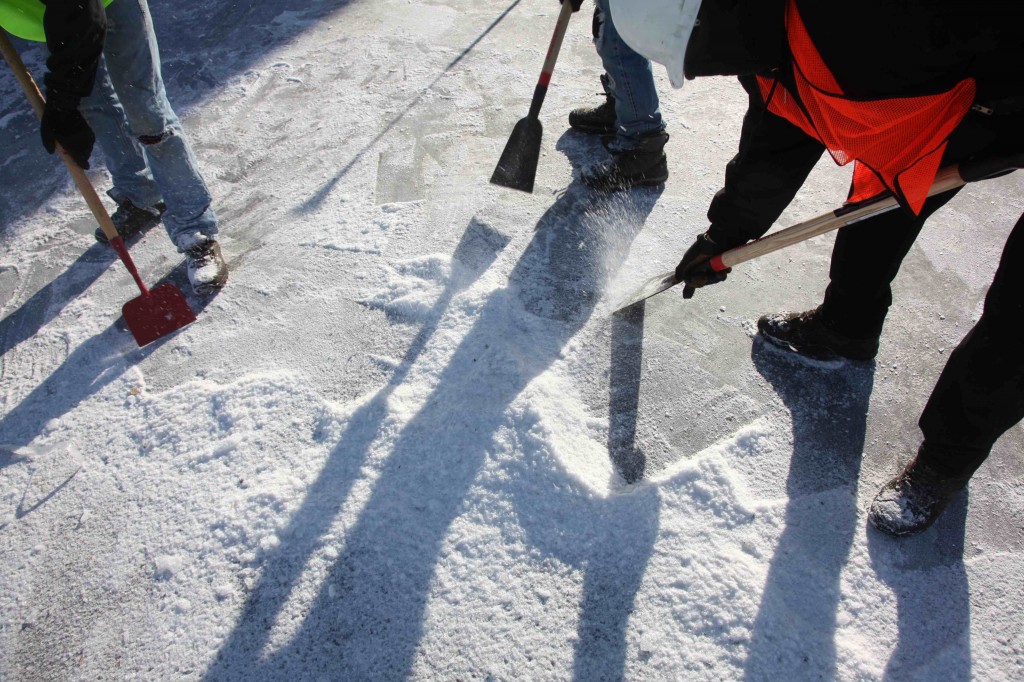
construction site ice removal, commercial ice removal, ice accumulation removal minneapolis, ice dam company
We have been called by property managers and builders to remove ice from a number of odd areas in Minneapolis over the years. Heck, we have even removed ice during the summer around cooling condensers at a chemical plant. While we frequently use our high-end steamers for the removal of ice, sometimes they are simply not appropriate. Such was the case on a recent job at a hotel under construction. A thin layer of ice had built up on the surface of a concrete floor that was perfectly flat…and huge. Using steamers in this application would have possibly resulted in making the problem worse by adding more water to the situation. While our steamers don’t generate much water, any time you melt ice, water is the result. Hence, my concern was that we would create a big mess. I suggested that we go old-school on this challenge. I sent three of my guys out there to hack and chip the ice with shiny, new scrapers. The resulting ice chips were simply blown and swept off the concrete, allowing the project carpenters to follow closely behind and lay out the wall framing without concern. It’s a low tech solution but sometimes that is what’s best.
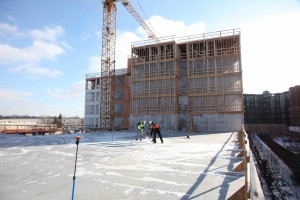
Ice removal minneapolis commercial ice removal from flat surface
Tags: about ice dams, best ice dam removal in minneapolis, best rated ice dam removal contractor, commercial ice removal, construction site ice removal, edina ice dam removal, how to file an insurance claim for an ice dam, ice and snow removal, ice dam expert, ice dam removal jerks, Ice dam Steaming, ice removal company, ice removal from concrete, ice removal professionals, minneapolis ice dam removal, orono ice dam removal, roof ice steaming, signs of an ice dam problem, wayzata ice dam removal
Posted in Ice Dams, Misc. | Comments Off on Commercial ice removal in Minneapolis
Friday, December 13th, 2013
We received a call yesterday that was odd, even by our standards. The other strange part is that it was the second call in two days about the same issue. The homeowner noticed a bad smell coming from the shower and sink drains in her home in multiple locations. Moreover, there was a gurgling noise coming from the drains when the toilet flushed or when the other fixtures were used. The smell was so bad these poor people had to leave their homes. It was the smell of raw sewage, which ranks up there with the rankest of rank. Bummer indeed.
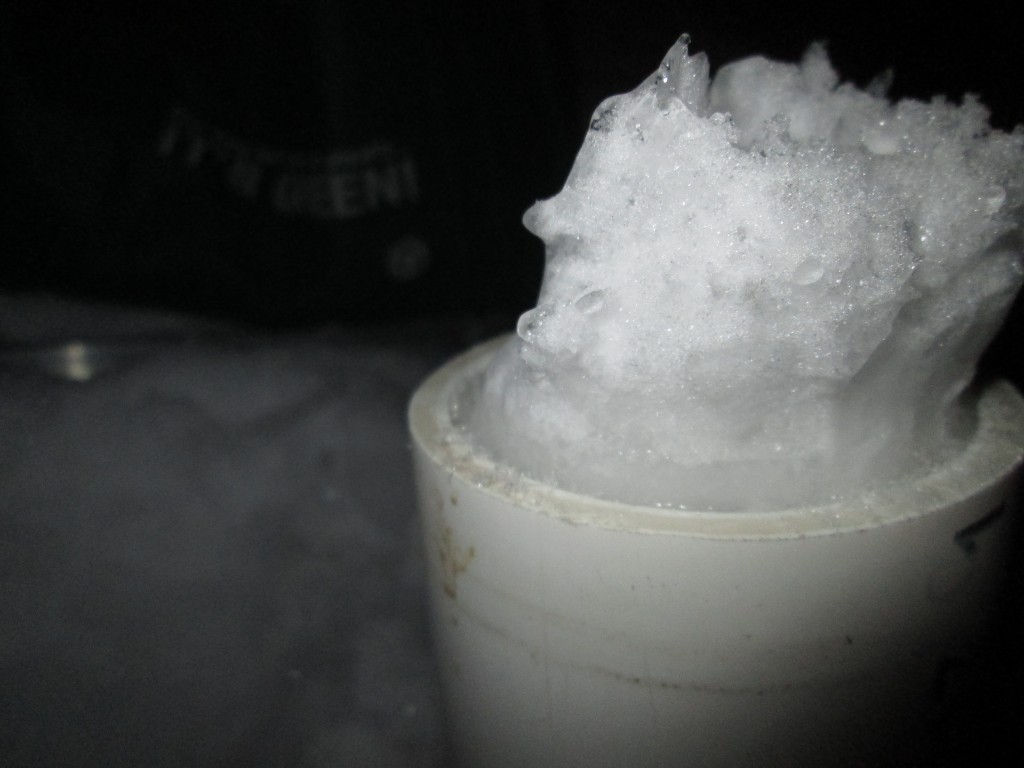
Plumbing vent plugged up with ice and snow
We sent one of our guys over there at 8pm in the dark to fix the issue because we felt so bad for these people. They had kids and the whole family was living at Grandpa’s house until the smell was figured out. Usually snow that falls on top of PVC plumbing vents just falls in and melts somewhere inside the system. In this case it piled up and formed a solid chunk of ice that completely blocked the pipe. We used a heat gun to quickly dislodge the ice and the problem was solved. We still can not figure out why this happened in the first place. Theoretically this could happen on every home in Minnesota but it doesn’t. We will be puzzling over this case for a while.
Tags: ice dam removal edina, ice dam removal jerks, lake minnetonka ice dam removal, minnepolis ice dam removal, orono ice dam removal, twin cities ice dam remover, wayzata ice dam removal
Posted in Ice Dams, Misc. | Comments Off on Plumbing Vent Blocked By Ice – A Mystery Smell Resolved
































